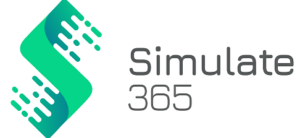Multicomponent distillation is used in a wide range of industries, including petroleum refining, chemical production, pharmaceuticals, and food and beverage production where the separation of complex mixtures is required.
In this process, a mixture of liquids is separated by heating the mixture in a distillation column with multiple trays or packing material, promoting contact between the vapor and liquid phases, and repeatedly evaporating and condensing the mixture to separate the different components based on their boiling points.
Understanding and modeling rigorous multicomponent distillation is essential for chemical engineers to efficiently and safely separate complex mixtures, optimize energy consumption, ensure product quality, and implement safety systems and procedures.
Advantages of Multi-Component Distillation:
👉 You obtain improved separation efficiency, as the increased surface area provided by multiple trays or packing in a distillation column allows for better mass transfer and higher purity products.
👉 You get better flexibility in design, as multi-component distillation can be customized to handle a wide range of feed compositions, flow rates, and operating pressures and temperatures, making it suitable for various industries.
👉 You save energy and reduce operating costs, as multi-component distillation can operate at lower pressures and temperatures, leading to lower energy requirements for heating or cooling the feed.
👉 You run more efficient maintenance, as individual trays or packing can be replaced or repaired without shutting down the entire column, reducing downtime and maintenance costs and improving productivity and profitability.
DWSIM, an open-source process simulation software, is well-known for its ability to simulate chemical processes with great accuracy, including the modeling of rigorous distillation columns.
Muhammad Saif offers a great learning resource for DWSIM simulation. We 👍 this video because:
– It starts by running a shortcut distillation column to calculate important parameters such as the reflux ratio, feed stage, and the total number of stages.
– It provides step-by-step guidance for the simulation of a rigorous distillation column.
– It displays the temperature, pressure, and composition profiles within the column, providing a visual representation of the distillation process.
